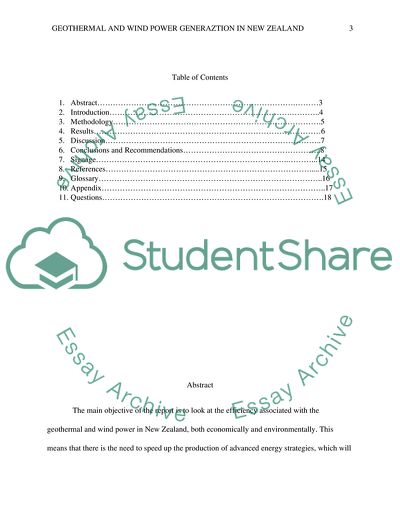Cite this document
(Geothermal and Wind Power Generation in New Zealand Coursework Example | Topics and Well Written Essays - 1750 words, n.d.)
Geothermal and Wind Power Generation in New Zealand Coursework Example | Topics and Well Written Essays - 1750 words. https://studentshare.org/engineering-and-construction/1768967-how-efficient-are-wind-power-generation-and-geothermal-power-generation-in-nz
Geothermal and Wind Power Generation in New Zealand Coursework Example | Topics and Well Written Essays - 1750 words. https://studentshare.org/engineering-and-construction/1768967-how-efficient-are-wind-power-generation-and-geothermal-power-generation-in-nz
(Geothermal and Wind Power Generation in New Zealand Coursework Example | Topics and Well Written Essays - 1750 Words)
Geothermal and Wind Power Generation in New Zealand Coursework Example | Topics and Well Written Essays - 1750 Words. https://studentshare.org/engineering-and-construction/1768967-how-efficient-are-wind-power-generation-and-geothermal-power-generation-in-nz.
Geothermal and Wind Power Generation in New Zealand Coursework Example | Topics and Well Written Essays - 1750 Words. https://studentshare.org/engineering-and-construction/1768967-how-efficient-are-wind-power-generation-and-geothermal-power-generation-in-nz.
“Geothermal and Wind Power Generation in New Zealand Coursework Example | Topics and Well Written Essays - 1750 Words”. https://studentshare.org/engineering-and-construction/1768967-how-efficient-are-wind-power-generation-and-geothermal-power-generation-in-nz.


